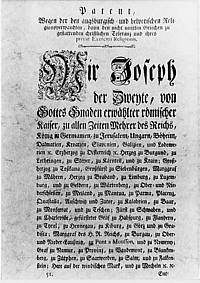
Roman Harper
Like most of Europe, Austria has an extensive recorded history. Celtic populations were among the early known settlers of present-day Austria, and the Romans took control of the area by 15 BC. During the second century AD, German tribes began penetrating the territory, and within a few centuries the Bavarians had dominated the eastern Alps and the Wienerwald region. Austria later formed part of the Holy Roman Empire for a time.
Under the Babenbergs in the 12th century, Vienna was used as an imperial residence, and has been the capital of Austria since that time. Subsequently, the Habsburg dynasty controlled the country for six centuries. The dynasty’s authority was challenged by Napolean who, despite taking over many Austrian territories, was eventually repelled. The sentiment of the French Revolution sparked revolt in Austria, but the country’s emperor came down harshly to quash the rebellion.
Austria ignited World War I in 1914 by declaring war against Serbia after the assassination of Franz Ferdinand heir to the throne and archduke. The emperor at the time died during the war and Austria emerged from the war as the first Republic of Austria, officially ending Habsburg rule. Austia was absorbed into the German Reich by Hitler during World War II, and it was occupied by the Allies for a decade following the end of the war.
Austria has 8.5 million inhabitants. Of these, 98% speak German. Vienna is the largest city in the country. Six ethnic groups are officially recognized in Austria: Burgenlandic Croatian, Roma, Slovaks, Slovenians, Czechs, and Hungarians. The country has 9 independent federal states: Burgenland, Carinthia, Lower Austria, Upper Austria, Salzburg, Styria, Tyrol, Voralberg, and Vienna. Each of these states has a provincial government. Federal legislation is created by the Nationalrat (national council) and Bundesrat (Upper House of Parliament). Austria is an European Union and a United Nations Member State.
In 2001, Austria was 74% Roman Catholic, 5% Protestant, 4% Islamic Religious Community, and 17% other faiths, no religion, or not stated. Austria has traditionally been heavily influenced by Christianity, in particular Catholicism. Although Protestant religions began to gain traction during the Reformation in the 16th century, the Habsburg Counter-Reformation increased the number of Catholics again. A personal right to religious freedom began to form with the Patents of Tolerance of 1781–1782. Tolerance and religious equality were strengthened by Staatsgrundgesetz (Basic Law on the General Rights of Nationals) of December 1867. This law gave certain guarantees to each recognized religious entity. The recognition process was further refined in 1874. The Israelitengesetz (Law on the Israelite Religious Community) of 1890 accomplished greater equality for Judaism. The Islamic Religious Community was granted recognition in 1912. Austria’s religious spectrum has continued to diversify in the last century.